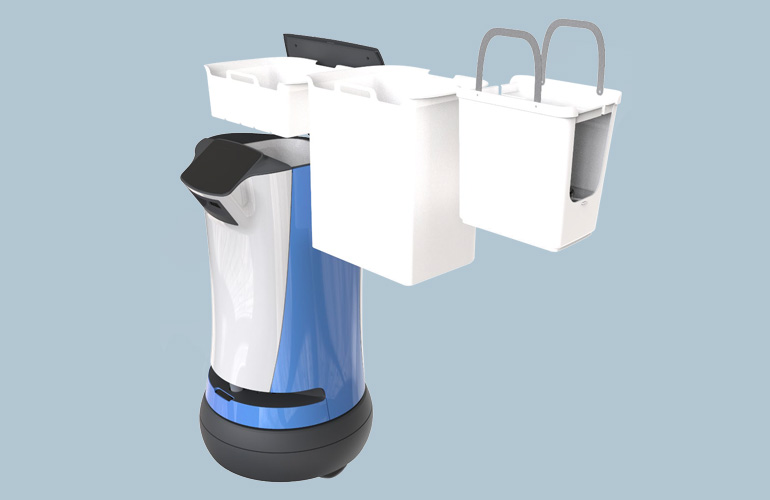|
Listen to this article  |

The new Relay2 has the same look but has been reconfigured to hold 2x the cargo. | Credit: Relay Robotics
Relay Robotics, formerly known as Savioke, introduced its newest robot, Relay2, at the NYU International Hospitality Industry Investment Conference. The redesigned Relay2 delivers twice the cargo capacity (10 gallons, 41 liters) of earlier models while maintaining Relay’s sleek design.
The company spent the last year retooling the robot to better meet the needs of hotel, hospitality, and healthcare businesses. Relay Robotics said it did a lot of research to come up with a solution that meets the changing needs of these sectors.
At the core of the new product is a redesigned cargo bay, capable of carrying items such as pizza boxes, coffee cups, and food delivery containers/bags. Since the pandemic, Relay said, many hotels have opted to close onsite kitchens and shut down room service as labor scarcity continues to be a concern for the industry.

Relay2 has a larger cargo compartment with the ability to transport a variety of items. | Credit: Relay Robotics
Relay Robotics said many travelers now prefer to order-in meals through delivery services such as Uber Eats and Doordash. The new Relay2 is designed specifically to autonomously transport the typical food delivery cartons from the front lobby up to a hotel room. Relay Robotics listened to existing clients who described the advantages of using the Relay to complete order-in deliveries without the need for either front desk staff to leave their posts or for patrons to come down to the lobby. It’s a win-win for travelers and hotel management.
New approach to working with elevators
The other big feature change with Relay2 is the elimination of the mechanical elevator button interface on the original Relay1. The company has developed proprietary, cloud-based elevator integration technology to support all elevators from the major elevator companies, including OTIS, Schindler, TK, Mitsubishi, KONE, and others. This enables Relay2 to navigate throughout a hotel, enabling deliveries from the front desk or kitchen directly to hotel guest rooms within an average time of 4 minutes, Relay Robotics said.
“We’re excited to introduce Relay2 and bring more value to hotel owners and staff with a larger, more versatile robot and accessories to deliver better guest experiences,” said Michael O’Donnell, chairman and CEO of Relay Robotics. “Our hotel customers love Relay1 but asked us to make it larger to handle the newer realities of takeout deliveries from companies like UberEats, GrubHub, and DoorDash, and more fully integrated into their hotel operations.”
Relay robots are featured at hotels and resorts worldwide, including Hilton, Hyatt, IHG, LUMA, Mandarin Oriental, Marriott, Radisson, Sonesta, and Wyndham and are sold on a monthly subscription basis or RaaS (Robots as a Service). The company expects to retire the earlier editions of Relay robots and deploy the newer model as contract renewals come up at no additional cost.
Relay2 also includes a larger 8-inch touchscreen display that Steve Cousins, Relay Robotics founder and chief technology officer describes as “brighter and with better viability.”
“We’re proud of the technology and design advancements we’ve made in Relay2 by doubling the storage capacity, improving navigation, and enhancing the user experience,” Cousins said. “We’ll continue to build on our proprietary elevator technology and leverage our software platform to make seamless integrations with common apps.”
“Hôtel Monville has had our Relay robot for several years and we are excited about the newly designed and enhanced Relay2,” said Jean-Cédric Callies, director of sales and marketing, Hôtel Monville, Montreal, Canada. “The multifunctional accessories allow delivery of wine bottles and new items that provides us with a valuable opportunity to integrate additional hotel services, which will delight our guests and create a more memorable experience.”
Relay is also targeting hospitals for Relay2. With a secure and flexible cargo compartment, a Relay2 robot can be easily configured for tasks such as specimen delivery, pharmaceutical delivery, linen delivery and other medical supplies. The software application for Relay2 enables complete chain-of-custody tracking and can be set up to require passcode verification for opening the cargo compartment.
Credit: Source link


Comments are closed.